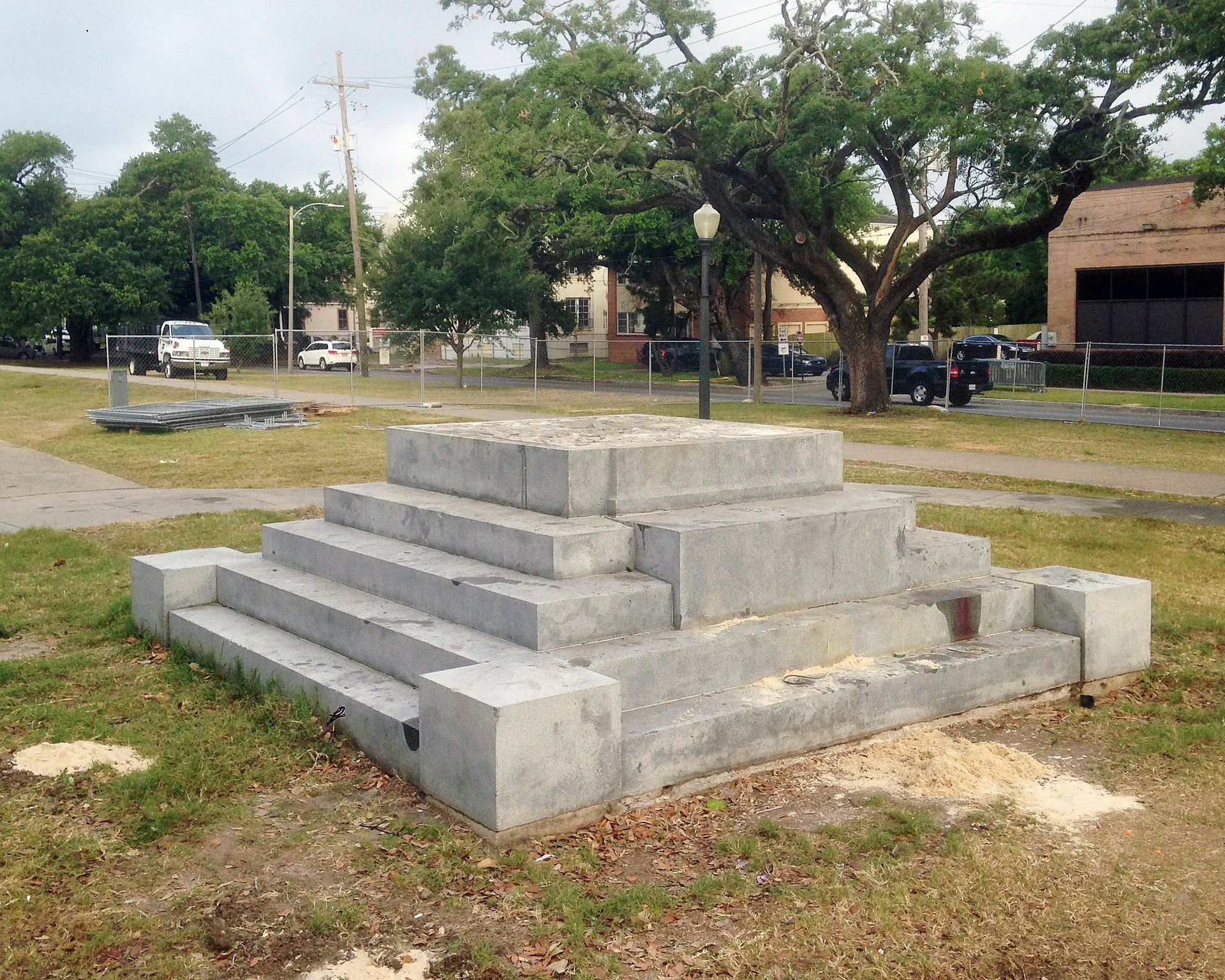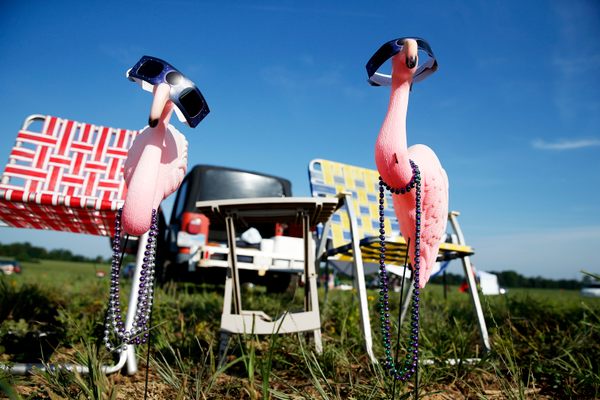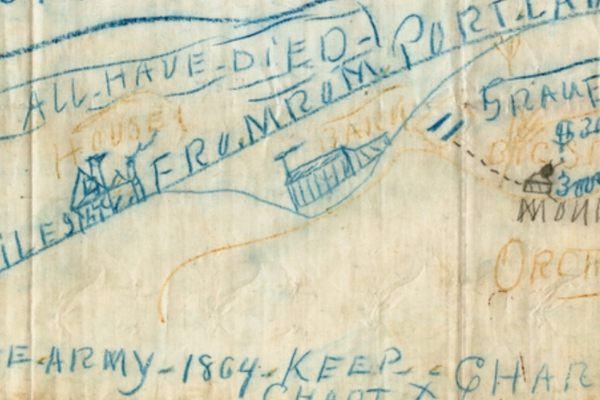The Racism of American Monuments Goes Well Beyond Confederate Statues
A new map of Civil War-related landmarks is only the beginning.

Earlier this week, the Southern Poverty Law Center (SPLC) released a map of Confederate symbols—including monuments, roads, flags, and school names—on public land across the United States. The map is sprawling, showing Confederate commemorations as far from the South as Washington State and Maine.
It’s growing, too. The map’s first edition, which includes 1,503 such symbols, was released in 2016—about a year after the 2015 Charleston church shooting, during which includes nine black congregants were murdered by a white supremacist. After it was reported that the shooting’s racist perpetrator had posed with the Confederate flag, community discussions around whether or not to continue to publicly display the flag, and other Confederate symbols, became more numerous and more urgent.
Two years later, further events—including a white supremacist riot in Charlottesville, itself motivated by the planned removal of a statue of Robert E. Lee, and during which three people were killed—have inspired further action and conversations. During that time, the SPLC reports, at least 110 symbols have been removed from public places. But the overall number of known symbols has increased. Due to list additions and new constructions, the SPLC now counts 1,728.
What can we learn from this enormous clump of dots? In a time when communities across the United States are discussing what exactly they want to memorialize—and how exactly they want to do it—“I think maps like this are wonderful,” says W. Fitzhugh Brundage, a professor of history at the University of North Carolina, Chapel Hill. But if we’re aiming at a complete understanding of how segregation and racism have influenced the nation’s memory, he says, it’s necessary to go even further.
Brundage serves as the scholarly advisor for a UNC project called “Commemorative Landscapes,” which catalogs memorials in North Carolina. Taking stock of memorials and other symbols, the project’s website explains, can help researchers and other interested parties understand “how various communities … use the past to define themselves.”
Maps like the SPLC’s are vital for understanding this commemorative landscape on a national scale, says Brundage. While individuals may be familiar with one or two Confederate monuments, especially if they’re nearby or particularly contentions, “most people don’t have a sense of the number,” he says. “They don’t know where they’re located, when they were put up, or who put them up.” The SPLC map, and its associated database, help add a narrative to what might otherwise seem like a pell-mell assortment of street names and statues.
For example, about 25 percent of the memorials on the SPLC map were sponsored by the United Daughters of the Confederacy. “Between the 1890s and 1930, they went on a monument-building spree,” Brundage says. “Their goal was to provide a counterpoint to any Union commemoration.” This helps to explain why monuments ended up in states that weren’t part of the Confederacy, including Ohio and Massachusetts.

Other trends are similarly thought-provoking. Brundage points out that, along with commanders Robert E. Lee and Stonewall Jackson, one of the most popular Confederate memorial honorees is Nathan Bedford Forrest, who has around 50 entries on the SPLC map. “During the Civil War, [Forrest] was one of the most capable Confederate commanders,” Brundage says. Afterwards, during Reconstruction, he became the first Grand Wizard of the Ku Klux Klan.
“What is it about this man that we want to commemorate?” Brundage asks. “He was a good soldier. But there is nothing else about his life that one would think would make him a model of what we would like our children to be, or what we would like American society to be.”
As they explain in an accompanying report, the SPLC gathered their data from various governmental surveys, news accounts, and public and private databases. They excluded symbols located in historic contexts like museums or battlefields. Still, the map is “not close to being complete,” says Brundage. He doubts that a truly comprehensive one is possible: “There are so many road names in the South named after Confederates, I think it would take years to identify all of them,” he says. “That’s not to detract from what the SPLC is doing. But it’s the tip of the iceberg.”
A more complete picture would make historical patterns even clearer, and could bring up additional ones as well. Brundage says it’s a fine idea to submit corrections and additions to the SPLC, which is accepting them through June 15.

But he encourages those interested in commemorative landscapes to think bigger, too. “The larger map, if you will, is not just of Confederate symbols,” he says. “It’s the exclusion of African Americans from the historical landscape in general.” Once again, the numbers show how stark this is: Of the 1100 or so monuments in North Carolina, Brundage says, “There are 34 that depict African Americans … as historical agents.” That’s about 3 percent.
There are other kinds of exclusion as well. For instance, in addition to cataloguing the state’s Confederate monuments, the Commemorative Landscape project keeps track of veterans’ memorials. “While World War I-era monuments in the memorial South sometimes include the names of those African-Americans in the communities who served, many don’t,” he says. Others separate names by race. While these are not explicitly Confederate symbols, “[they are] monuments of segregation,” Brundage points out. “They’re visible reminders of [it], if you know what to look for.”
As communities find out about these omissions, some are taking it upon themselves to update their memorials. And of course, certain places are choosing to take down their Confederate statues as well.
But while these get a lion’s share of news attention, they’re a small segment of the overall situation—something else the SPLC map shows quite viscerally, adds Brundage. “The map does drive home the fact that if we want to have a conversation about changing this landscape, it’s going to take years,” he says. “It’s going to be a long, long march.”












Follow us on Twitter to get the latest on the world's hidden wonders.
Like us on Facebook to get the latest on the world's hidden wonders.
Follow us on Twitter Like us on Facebook